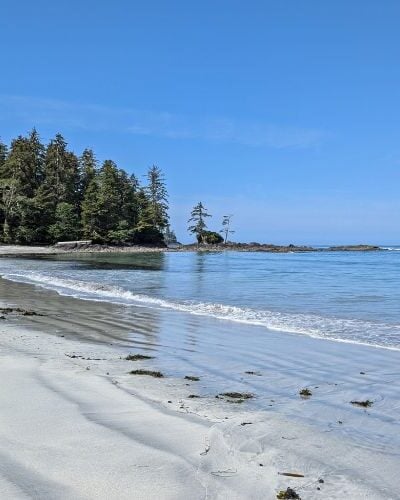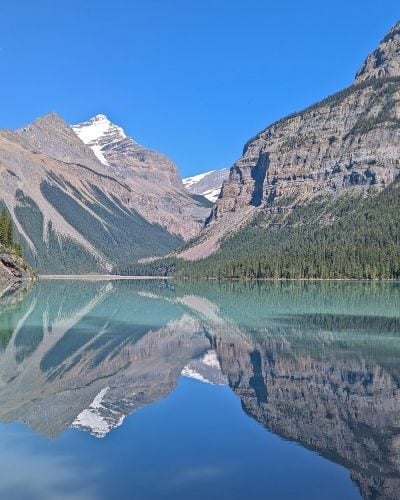British Columbia’s provincial park system ranks third in size in North America, behind only the national parks of Canada and the USA. It includes 600+ parks plus ecological reserves, protected areas and conservancies, totalling over 14 million hectares of land.
After living in British Columbia for over a decade now, I find it easy to understand why the park system is so extensive. Not only is BC a large place geographically, its landscapes are incredibly varied.
From the temperate coastal rainforests and the interior’s grasslands and semi-arid landscapes, to the subalpine meadows and peaks of the many mountain ranges, this province showcases so much ecological diversity.
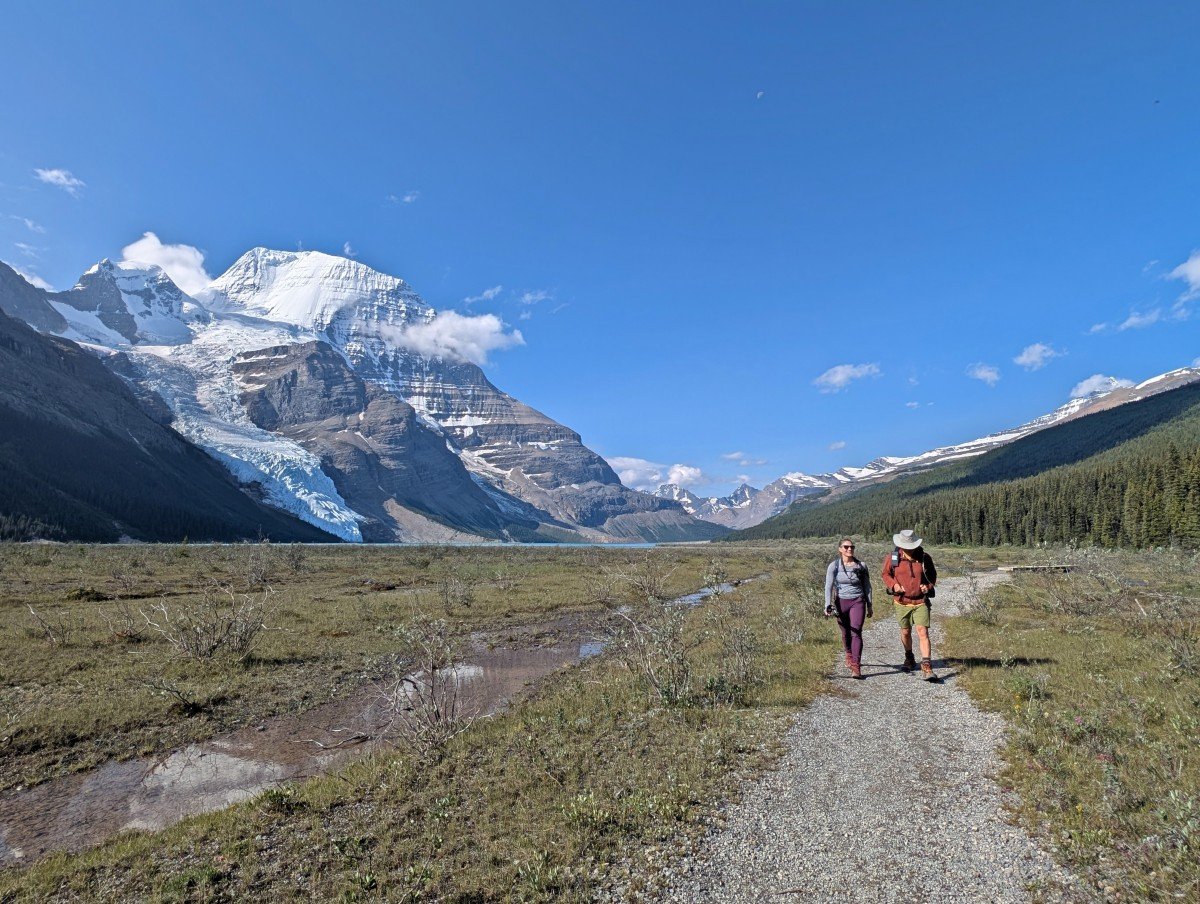
BC’s provincial park system protects these varied landscapes and the plants and animals that live there. For us humans, these protected spaces provide endless outdoor recreation opportunities. Over the years, JR and I have been fortunate to explore many of them (I even worked at one!)
This post shares our top picks for BC’s best provincial parks. I’ll start with the parks I find most impressive as well as the ones with the most to see and do, with extensive facilities and trail networks.
This guide also highlights smaller parks perfect for day trips, the most popular camping destinations and parks with a backcountry focus. Hopefully, it gives you some inspiration for future trips!
Quick facts about provincial parks in BC
- BC’s provincial parks are managed by BC Parks, an agency of the Ministry of Environment
- The park system covers over 14% of the land in BC
- There are over 6,000km of hiking trails, around 13,000 campsites
- All parks are completely free to visit for the day – fees are only charged for camping and other services
- A few of the most popular parks near Vancouver have day use pass systems to manage visitation during peak times
- Find information about individual parks on the BC Parks website, reserve campsites through the BC Parks Camping website. There is a four month rolling window for camping reservations

BC’s premier provincial parks
Let’s start this guide to the best provincial parks in BC with true destination parks, the kind you build a whole trip around.
A park where a single day simply isn’t enough to take in the highlights. Places so remarkable that I can’t believe they are not in a national park but not even have an admission fee.
Most of the following parks are large in size and feature a range of visitor facilities, from frontcountry infrastructure (scenic viewpoints, day use areas, hiking trails, vehicle accessible campgrounds) to backcountry services (multi-day trails, wilderness campsites). A few of these parks offer backcountry experiences only.
We have personally visited all but one of these provincial parks. Some of them are places we’ve got to know very well, thanks to multiple visits.
- Strathcona Park
- Juan de Fuca Park
- Cape Scott Park
- Desolation Sound Marine Park
- Garibaldi Park
- E.C. Manning Park
- Cathedral Park
- Valhalla Park
- Wells Gray Park
- Mount Robson Park
- Bowron Lake Park
- Monkman Park
- Naikoon Park

Strathcona Provincial Park
Established in 1911, Strathcona is BC’s oldest provincial park. It occupies the mountainous heart of Vancouver Island, spanning over 250,000 hectares (about half the size of PEI!) We’ve been to Strathcona dozens of times over the years – it was actually the first provincial park I ever visited.
There are two vehicle accessible areas of the park – Buttle Lake near Campbell River/Gold River, and Forbidden Plateau near Courtenay. Buttle Lake has two campgrounds, picnic areas, several waterfall trails and more. The highlight of Forbidden Plateau is the Paradise Meadows Centennial Trail, a 2km long boardwalk suitable for wheelchair users.
The rest of the park is rugged wilderness, offering almost endless possibilities for alpine hiking and mountaineering. Strathcona is host to over 30 named peaks and also BC’s tallest waterfall – Della Falls. One of the most approachable peaks to summit is Mount Albert Edward (2093m), usually tackled as a 2 to 3 day trip via Circlet Lake.
More information: Gold River road trip guide

Juan de Fuca Provincial Park
Juan de Fuca Park is a celebration of Vancouver Island’s coastal landscapes, from pebble strewn beaches and crystal clear tidepools to windswept headlands and lush old growth temperate rainforest. It is situated just over an hour’s drive from Victoria and has one vehicle-accessible campground (China Beach).
Botanical Beach is one of the most popular destinations within the park, featuring tidepools teeming with marine life. The 47km long Juan de Fuca Marine Trail starts here and traverses technical forest and beach terrain, via twelve designated campgrounds. Sections of the route can be visited on shorter day hikes, including Sombrio Beach, which has an incredible hidden waterfall.
Juan de Fuca Park has received a lot of visitation over the last few years and this combined with some particularly harsh winter storms has unfortunately resulted in significant damage to the Marine Trail. Most of the route remained closed in 2025 and a re-opening date has not yet been announced at the time of writing.
More information: Pacific Marine Circle Route road trip guide

Cape Scott Provincial Park
Cape Scott is a more rugged, remote and even wetter version of Juan de Fuca Park. Located on the northwestern tip of Vancouver Island, this park offers a blend of beautiful sandy beaches, wave and weather eroded rock formations, old growth temperate rainforest and coastal wetlands.
Unique to Cape Scott is its interesting history, starting with the Tlatlasikwala, Nakumgilisala and Yutlinuk people who first travelled and lived in this area. Just over 100 years ago, two large groups of settlers attempted to build communities and eventually left with only what they could carry. Historical artefacts now litter the landscape.
Cape Scott is primarily a backcountry park. The 47km beginner friendly Cape Scott Trail and the much more challenging 43km North Coast Trail are the highlights, both featuring incredible beach camping (we’ve hiked both!) Non-hikers can still enjoy a taste of the area at San Josef Bay, with its golden sands and dramatic sea stacks.
More information: Cape Scott Trail guide, North Coast Trail guide

Desolation Sound Marine Provincial Park
If the name didn’t grab your attention, the ocean views soon will! Desolation Sound is a marine park, meaning that it is accessible only by water (boat/kayak). It is located at the top of BC’s Sunshine Coast, closest to the city of Powell River.
Desolation Sound is best known for its warm waters, sheltered bays and beautiful mountain views. The protected areas include a collection of small islands alongside an expanse of mostly undeveloped mainland. It’s a wonderful place to explore by kayak, with the experience being as peaceful or active as you like.
There are 11 designated backcountry camping areas across the park and neighbouring Copeland Island and Malaspina Marine Parks. All operate with a first come, first serve system. The campgrounds are ideal for touring paddlers on longer trips or those looking for a base camping experience (we’ve done both).
More information: Desolation Sound paddling guide
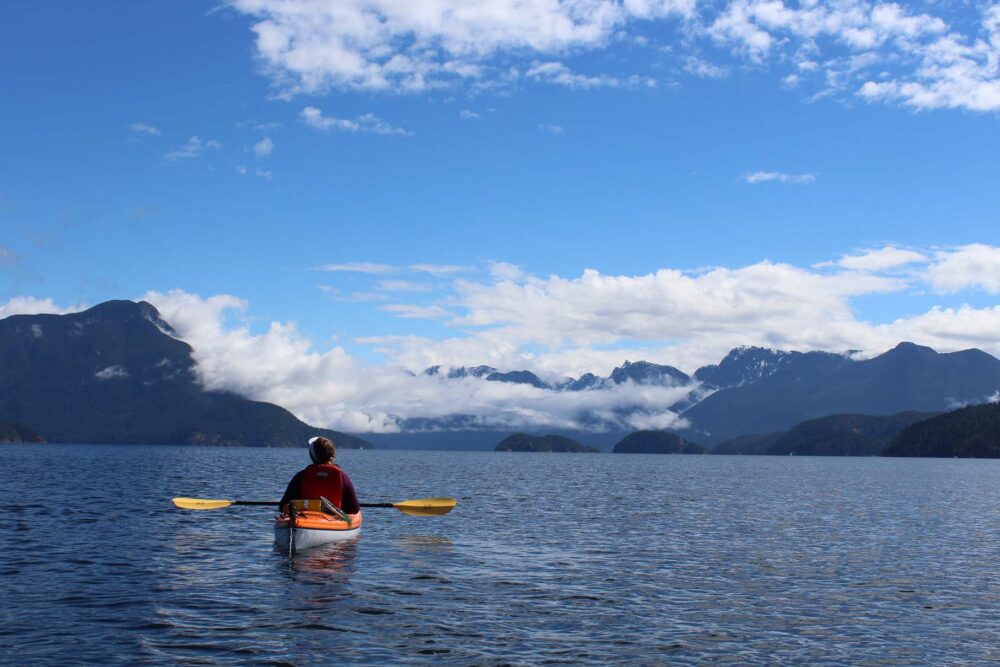
Garibaldi Provincial Park
Garibaldi Provincial Park is a sprawling mountainous wilderness area that stretches along the Sea to Sky Highway from Squamish to Whistler and beyond. The expansive trail network spans more than 90km with multiple backcountry campgrounds. A day use pass is required during peak periods.
This park is most famous for the Panorama Ridge hike that leads to the most incredible viewpoint over turquoise coloured Garibaldi Lake and many snow capped mountains. There are many other worthy alternatives, however, such as Elfin Lakes (my favourite), Wedgemount Lake (short but very steep), Russet Lake (moderate level) and Cheakamus Lake (more beginner friendly).
Garibaldi is a backcountry focused park – for vehicle accessible experiences, check out nearby Alice Lake Provincial Park (lakes, fishing, campgrounds) and Brandywine Falls Provincial Park (waterfall, day hikes).

E.C. Manning Provincial Park
When I consider all of the parks on this list, Manning Park is my all time favourite when it comes to the visitor experience. This large park has multiple day use areas and vehicle accessible campgrounds, all complemented by an expansive network of hiking trails.
Manning Park is located in the heart of the Cascade Mountains, the transition point between the lush temperate rainforests of the Lower Mainland and the drier grasslands of the Okanagan Valley. It’s three hours drive from Vancouver, which is just on the edge of being too far for most day visitors from the city (and the park is quieter for it).
Lightning Lake, the Cascade Lookout and the Paintbrush Trail are my top picks for those short on time (or energy), with the Heather Trail, Skyline II and Frosty Mountain being great options for longer visits.
More information: Frosty Mountain larches hiking guide

Cathedral Provincial Park
Cathedral is definitely one of BC’s most underrated provincial parks. It’s one of those places that skims under the radar for most, with the exception of Okanagan Valley residents. And yet it is an extraordinary place, where the developed core area of the park is entirely above 2000m elevation.
Located near Keremeos, this provincial park showcases mountain peaks, far reaching views, azure lakes, alpine meadows and incredible rock formations. It is also known as a reliable place to see mountain goats.
To reach the core area of the park, visitors must either spend a day hiking in or take the Cathedral Lakes Lodge shuttle bus. The lodge operates a range of cabins and lodge rooms, all five minutes walk away from the Quiniscoe Lake backcountry campground.
The Crater Mountain wildfire swept through some areas of Cathedral in 2023 – limited sections of the park were open in 2025. Based on updates, shuttle access should resume in 2026.
More information: Rim Trail hiking guide

Valhalla Provincial Park
The name is evocative and the park’s beauty even more so. Valhalla is a backcountry focused park situated in the Slocan Valley, a short drive from both Nelson and Nakusp.
Towering mountains and deep valleys dominate the centre of this magnificent park. To the east, the cool and seemingly bottomless Slocan Lake creates a natural 39km long border. The developed facilities in the park make it possible to explore from lake level (536m) all the way to the top of mountain peaks (2800m).
Slocan Lake has eight marine campgrounds along the western shore, with five trailheads leading into the forest and mountains beyond. I rate Slocan as one of BC’s best canoe trip destinations, though a wildfire in 2024 has left some of the campgrounds and trails closed for now.
For hiking, Gwillim Lakes and Gimli Ridge are both unforgettable destinations (high clearance vehicle required for access).
More information: Valhalla Provincial Park adventure guide
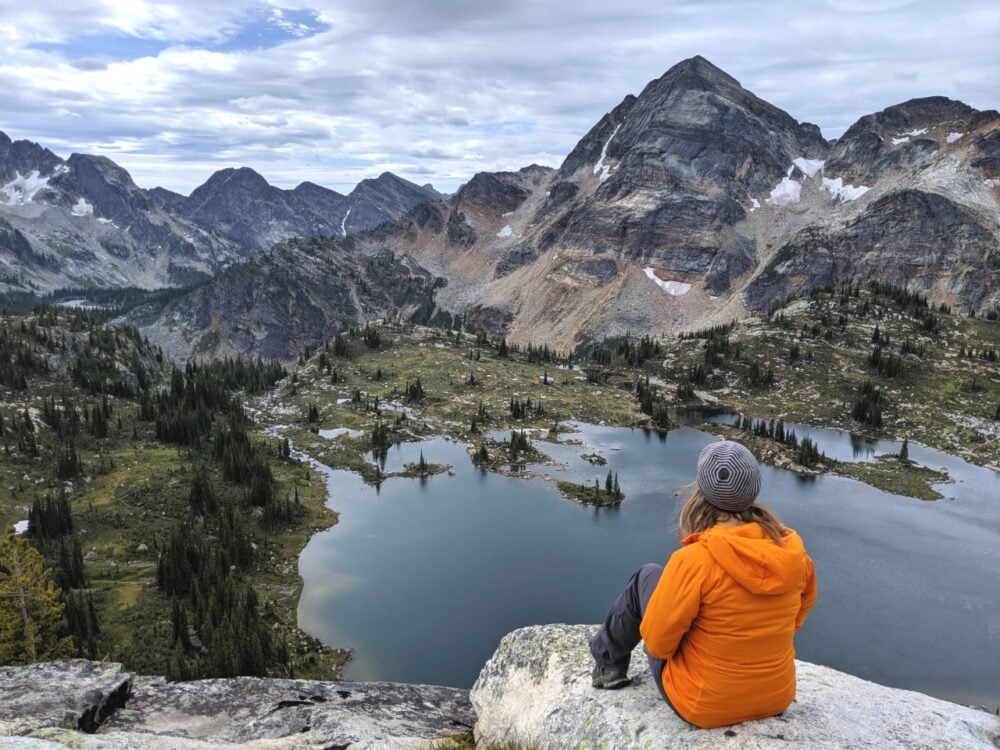
Wells Gray Provincial Park
Obsessed with waterfalls? You’ll fall in love with Wells Gray. Boasting as many as 41 spectacular waterfalls, Wells Gray Provincial Park is a must-see destination. From the iconic Helmcken Falls and wide Dawson Falls to lesser-known gems, each cascade is uniquely beautiful.
The fourth largest provincial park in BC, Wells Gray has several different developed areas. For most visitors, the Wells Gray Corridor near Clearwater is the place to go. This 68km long scenic drive takes in many of the park’s top natural attractions and provides access to three campgrounds.
For backcountry fans, there are many opportunities to explore the vast park. Murtle Lake, on the eastern side of the park, is a magnet for paddlers. This huge glacier-fed lake features 19 different backcountry camping areas with no motor boats allowed.
Another option for canoeists and kayakers is Clearwater Lake and Azure Lake. For hiking, the Trophy Meadows Trail is wonderful for its views and wildflowers.
Read more: Wells Gray waterfalls guide

Mount Robson Provincial Park
At 3954m, the snow capped peak of Mount Robson is an extraordinary sight on a clear day. It’s the highest mountain in the Canadian Rockies and the provincial park protecting it is BC’s second oldest.
The mountain is known by the Secwepemc people as Tsyécelcten, ‘mountain of the spiral road,’ referring to its layered appearance. Amazing views of Mount Robson can be seen on the famous (and recently reopened) Berg Lake Trail. Most hikers spend 3 to 5 days on this 44km long adventure.
If you’re not up for a multi-day hike, don’t worry. Mount Robson can still be seen from the main day use area. There are also two lovely vehicle accessible campgrounds and a range of shorter trails, including beautiful Kinney Lake and Overlander Falls. Though technically not in the park, I’d recommend to make time to see nearby Rearguard Falls.
More information: Berg Lake Trail hiking guide

Bowron Lake Provincial Park
BC’s most iconic canoe trip is located in Bowron Lake Provincial Park near Quesnel. The Bowron Lake Canoe Circuit is a perfect parallelogram of twelve lakes, several rivers and eight portages surrounded by temperate rainforest and mountains.
It is a 116km long journey through what it is essential a remote wildlife refuge with incredible topographic diversity. Most paddlers spend 5 to 8 days exploring the Bowron Lake Canoe Circuit, travelling in a clockwise direction. There are 54 designated camp areas around the circuit.
While this is a backcountry focused park, there is a vehicle accessible campground and the opportunity to fish or swim in Bowron Lake itself (the last lake on the circuit).
More information: Bowron Lake Canoe Circuit guide
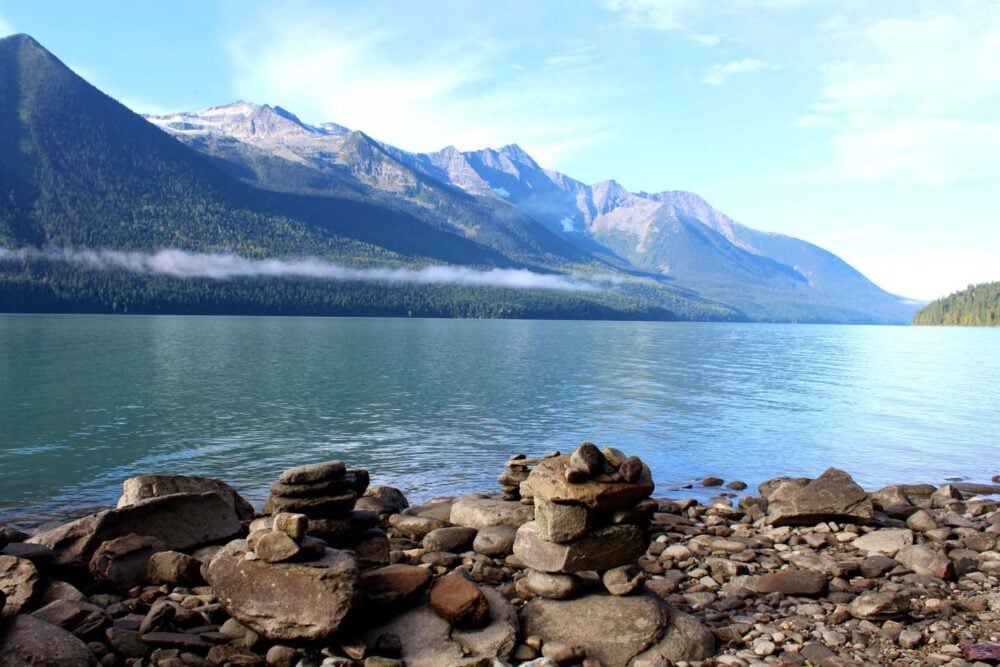
Monkman Provincial Park
The most northern provincial park on this list, Monkman is also hugely underrated. Located in the Central Rocky Mountains, this park showcaseas a blend of mountains, forested valleys, alpine lakes, alpine meadows and waterfalls. The latter are particularly showstopping.
The most developed area centres around Kinuseo Falls, a spectacular 60m high waterfall on the Murray River. There is a vehicle accessible campground nearby. There are trails to multiple viewpoints, though the main viewing platform is currently being rebuilt for the 2026 season.
The 50km long Monkman Lake Trail is the other star of the park. It follows a historic route through forest and rocky areas to the Monkman Cascades, a series of ten different waterfalls plunging over rock ledges. There are five backcountry camping areas along the trail.
More information: Monkman Provincial Park website
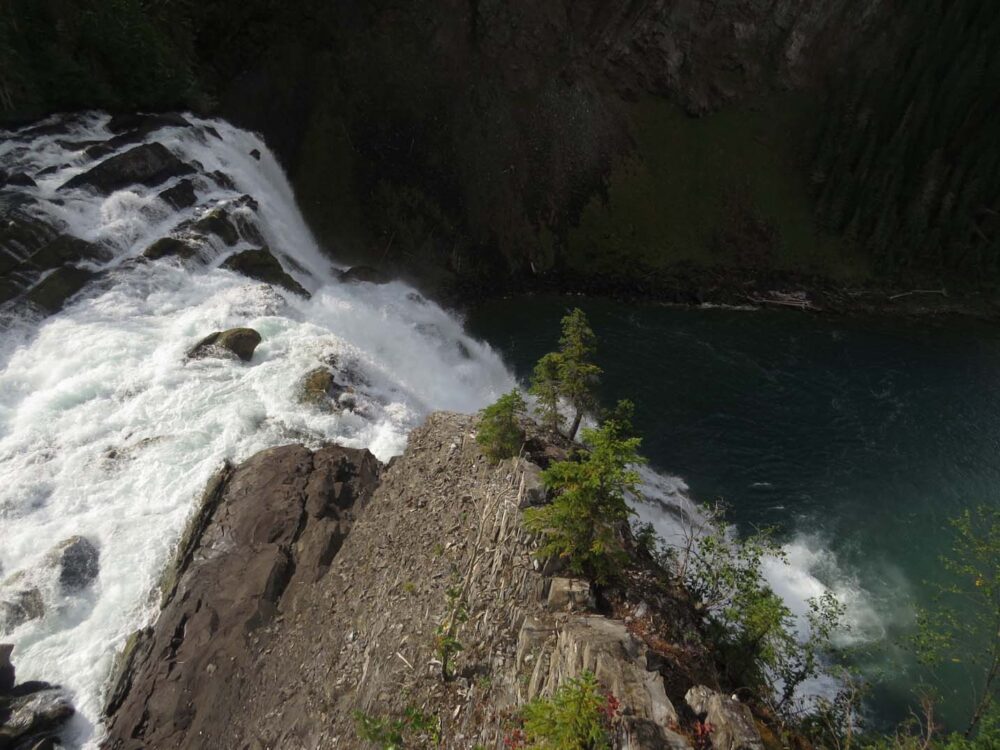
Naikoon Provincial Park
Naikoon showcases wild coastal landscapes on Haida Gwaii, an archipelago located off the northern coast of BC. Part of the traditional territory of the Haida, the park’s name originates from Née Kun, meaning ‘House Point.’ There are village sites and traditional food gathering areas across the park.
One of the most scenic areas in Naikoon is East Beach, a 90km stretch of sand with expansive dunes. It is possible to walk the entire length of the beach as part of a multi-day hike (the East Beach Trail) There are shorter hikes too, with the Tow Hill/Blow Hole Boardwalk one of the most popular.
Full disclosure, I’ve never been to Naikoon. But it is high on my list. I’ve been told by so many people that it is one of BC’s best provincial parks, a must visit for any nature lover.
More information: Naikoon Provincial Park website
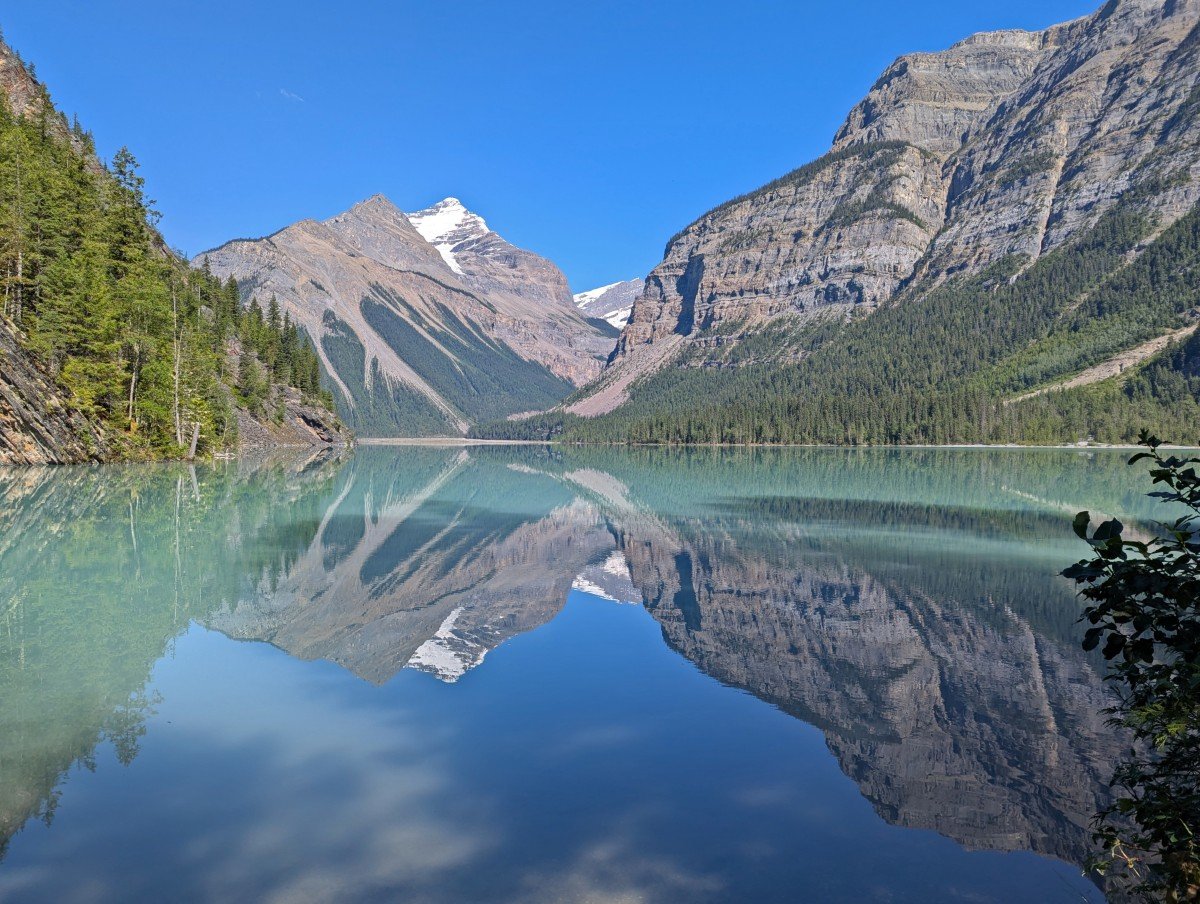
Small but mighty provincial parks
Thinking about exploring a provincial park for the day or stopping at one on a road trip? I’d highly recommend the following parks.
Many of these provincial parks are small in terms of total area or feel compact since most visitor facilities are concentrated into one section. Joffre Lakes is a good example of the latter.
Some of these parks have campgrounds while others are for day use only. We’re thrilled to be able to say that we’ve visited each and every one!
- MacMillan Park near Port Alberni – Famous for good reason, this stunning old-growth forest grove is intersected by Highway 4 and is usually very busy
- Stamp River Park near Port Alberni – Best known for its annual salmon run and frequent black bear sightings
- Carmanah Walbran Park – Lesser known old growth forest grove reachable by unpaved roads only. Currently inaccessible due to slides (check website for updates)
- Elk Falls Park near Campbell River – Spectacular waterfall with free suspension bridge, nearby campground is a great base for visiting Campbell River and Strathcona Park
- Englishman River Falls Park near Parksville – Large waterfall plunging into steep canyon surrounded by old growth forest
- Joffre Lakes Park near Pemberton – Iconic alpine lake destination with backcountry campground (day pass required during peak times)

- Kentucky-Alleyne Park near Merritt – Series of intensely blue/green lakes surrounded by grassland. Great place to camp
- Kalamalka Lake Park, Vernon – Excellent network of hiking and biking trails plus walk-in beaches, all very close to the city
- Skaha Bluffs Park, Penticton – One of Canada’s best climbing areas, featuring over 1000 sport climbing routes
- Sun-Oka Beach Park near Summerland – Beautiful day use beach on Okanagan Lake with lots of parking and facilities
- Kokanee Creek Park near Nelson – Long sandy beach and four campgrounds plus fall salmon run
- Whiteswan Lake Park near Fairmont Hot Springs – Natural hot springs next to the river, multiple campgrounds with views of the Rockies
- Liard River Hot Springs Park – Must stop destination on the Alaska Highway near Yukon border featuring natural hot springs and a campground
- Muncho Lake Park – Plentiful wildlife (moose, stone sheep), unique limestone formations and a deep turquoise lake

Popular camping destinations
The following provincial parks are some of the most popular camping destinations in the province. While the campground isn’t the only feature of these parks, it’s a major draw for visitors.
There are many places I could have included in this section but these are my favourites. If you need any tips for making reservations, head to our BC Parks camping guide.
- Miracle Beach Park near Campbell River – Conveniently located forested campground within walking distance to a scenic beach (fun fact – I used to work here!)
- Rathtrevor Park, Parksville – Expansive beach, old growth forest, incredible ocean views and a very popular year round campground
- Gordon Bay Park near Lake Cowichan – Forested campground with lake access, ideal for an overnight stop while exploring the Pacific Marine Circle Route
- Goldstream Park near Victoria – Large campground complemented by excellent network of trails, seasonal salmon run, old growth trees
- Tribune Bay Park, Hornby Island – Spectacular long sandy beach and campground, one of the warmest salt water swimming areas in the province
- Golden Ears Provincial Park near Maple Ridge – Very large park close to Vancouver with three campgrounds plus backcountry options. Day pass required for non-camping visitors during peak times
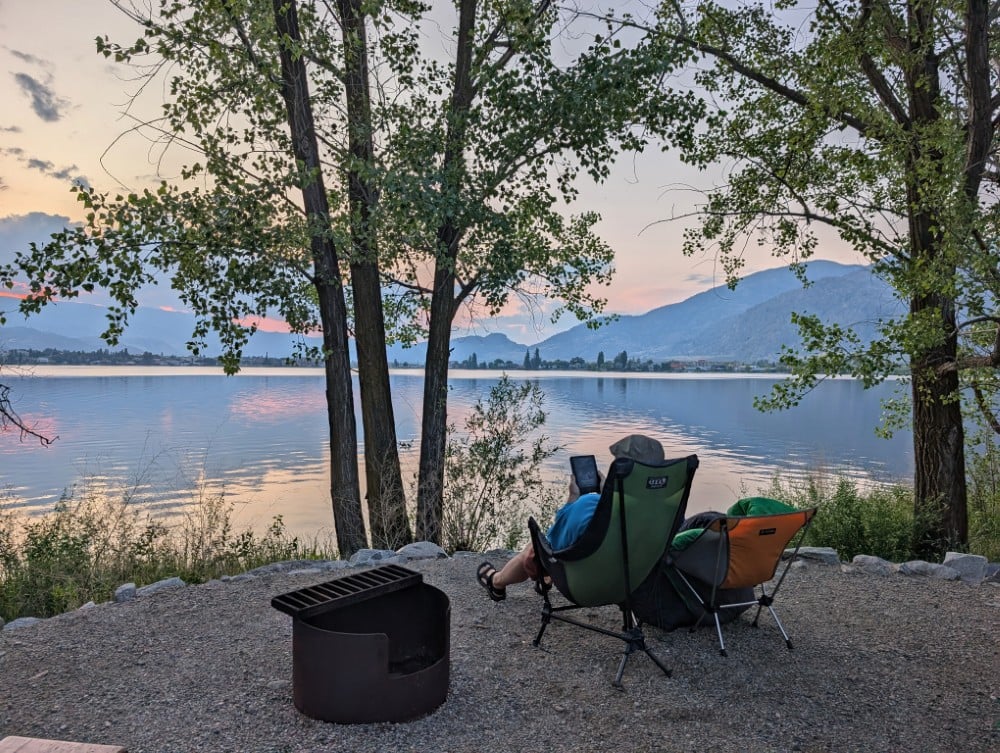
- Alice Lake Park, Squamish – Two campgrounds with four lakes, perfect for swimming and fishing
- Bear Creek Park near West Kelowna – Large campground on Okanagan Lake with easy access into Kelowna
- Ellison Park near Vernon – Compact campground next to Okanagan Lake offering swimming, biking and climbing opportunities
- Fintry Park near Vernon – Underrated campground with beaches, lakeside campsites, heritage sites and a tall waterfall
- Okanagan Lake Park near Peachland – Two large campgrounds next to Okanagan Lake, one with waterfront sites
- sẁiẁs (Haynes Point) Park, Osoyoos – Small but very popular campground on a peninsula jutting into Osoyoos Lake, most sites have water access
- Gladstone Park, Christina Lake – Off the beaten path gem with easy lake access. There are water accessible backcountry sites too
- Lac La Hache Park near 100 Mile House – Popular fishing lake and campground next to Highway 97

Backcountry focused provincial parks
Some of my favourite provincial parks in BC have limited vehicle access. The following parks have a backcountry focus, which means that they are primarily explored on foot (skis, horse, boat, helicopter also possible).
A few of these provincial parks do have some frontcountry amenities as well, yet it’s the backcountry experiences that truly stand out. We’ve personally visited Monashee, Kokanee Glacier and Bugaboo, with the others remaining on my ‘to visit’ list (for now).
- Monashee Park near Cherryville – Forested valleys and sub-alpine terrain, with a series of backcountry campgrounds including Spectrum Lake and Little Peters Lake
- Kokanee Glacier Park near Nelson – Mostly situated above 1800m, wide choice of summit, lake and alpine meadow objectives. Well equipped, centrally located campground with shelter
- Bugaboo Park near Radium Hot Springs – An iconic destination for rock climbing plus steep alpine hiking. Multiple backcountry campgrounds plus hut
- Tweedsmuir Park near Nimpo Lake – BC’s largest provincial park showcases waterfalls, volcanoes, bears and a bucket list canoe route, the Turner Lakes Chain
- Height of the Rockies Park near Fairmont Hot Springs – Large wilderness area in the southern Rockies with backcountry facilities only (camping, fishing, hiking, climbing)
- Northern Rocky Mountains Park near Fort Nelson – A vast protected region adjoining two neighbouring parks. The Wokkpash Valley Loop is a highlight
- Spatsizi Plateau Wilderness Park near Dease Lake – Expansive remote area with wilderness trails traversing plateau and mountain terrain

Other posts you may find helpful
2025 BC Parks Camping Reservations Guide
How to Reserve Backcountry Camping in BC: Essential Details and Dates
BC’s Best Backpacking Trips: Our Favourites and 60+ More Suggestions
Best BC Road Trips: 12+ Routes, Maps & Tips by a Local

Feeling overwhelmed planning your dream Rockies trip?

Our Vancouver to the Rockies Travel Guide features 350+ of the best things to do, travel tips and more.
The itinerary builder tool will help you create your perfect Rockies adventure!
Request a review or a customised itinerary tailored to your interests (extra fee)
Download the app and use offline while travelling!

Check out these recently published articles next

One half of the Canadian/British couple behind Off Track Travel, Gemma is happiest when hiking on the trail or planning the next big travel adventure. JR and Gemma are currently based in the beautiful Okanagan Valley, British Columbia, Canada. Consider buying us a coffee if you have find any of our guides helpful!

